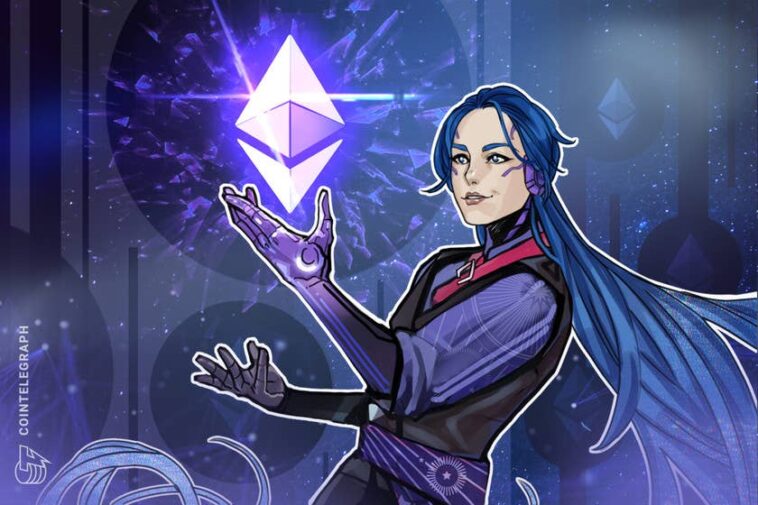Ethereum is a DeFi’s darling, but it’s not as perfect as it seems.
And how to make the development of dApps faster?
The issue can be solved by a new standard based on WebAssembly (Wasm) that addresses this bottleneck in rolling out decentralized apps (dApps). But Wasm isn’t recognized by Ethereum.
As mentioned, Wasm is faster than JavaScript development, and the new method is supported by the World Wide Web Consortium (W3C) and is already used in next-generation public blockchains such as Polkadot, Cosmos, Solana and Oasis as the virtual machine architecture to interact with their dApps.
In addition, Ethereum-flavored Wasm, better known as Ewasm, is a standard that is already on the Ethereum 2.0 roadmap. But while it is improving above, what options do we have to ensure compatibility between EVM and Wasm in the thousands of applications of the blockchain ecosystem?
Projects like ParaState allow the migration of non-Ethereum projects to the EVM, so compatibility with the gigantic Ethereum blockchain ecosystem is guaranteed without sacrificing the performance and speed offered by Wasm.
It is also backward compatible for developers meaning existing smart contracts built in Solidity on the Ethereum network can be implemented without alteration.
Disclaimer. Cointelegraph does not endorse any content or product on this page. While we aim at providing you all important information that we could obtain, readers should do their own research before taking any actions related to the company and carry full responsibility for their decisions, nor this article can be considered as an investment advice.
What is WebAssembly, and why does it matter?
Wasm is faster than JavaScript development, and the new method is supported by the World Wide Web Consortium (W3C) and is already used in next-generation public blockchains such as Polkadot, Cosmos, Solana, and Oasis as the virtual machine architecture to interact with their dApps.
However, most Wasm virtual machines are not compatible with EVM applications currently running on Ethereum, preventing most developers from running new applications on next-generation blockchains.
Projects developed on Ethereum are missing out on new development tools because of the restrictions of the Ethereum Virtual Machine (EVM).
Ultimately, this slows down the development of dApps compatible with Ethereum and makes developers less able to compete.
Why does Ethereum need improvement?
Perhaps, ETH is a victim of its own success — without the detailed rules around value transfer that smart contract functionality can supply, there is little else to do with currency beyond transfer value. Smart contracts allow us to associate payments with certain contingencies, like wagering or insurance payouts, or certain associated digital assets as with stablecoins and NFTs.
The ETH network is just over five years old, but concerns about the speed of the network have been nearly continuous, as have issues of cost and environmental impact. Issue 0 of the Ethereum 2.0 network launched in November 2020.
Early functionality has switched the network from a Proof-of-Work (POW) to a more environmentally-friendly Proof-of-Stake (POS) model, but the full rollout of the next-generation network isn’t slated until 2022.
Ethereum faces problems not only of slow transactions and steep transaction fees, especially as the token appreciates, but also faces the challenges of being a limited ecosystem that doesn’t support new developer tools and environments like WebAssembly (Wasm), for the intrinsic nature of its rigid architecture for assembling smart contracts.
What kind of functionality do Ethereum smart contracts have?
Smart contracts allow users to specify conditions on the transfer of value based on the terms of the contracts. In that way, Ethereum’s functionality goes beyond the simple transfer for value. Detailed terms can be created for each smart contract, and this feature has allowed for the rollout of a host of blockchain-based financial services, including (but not limited to):
- Lending
- Decentralized Insurance
- Decentralized Exchanges
- Stablecoins
- Yield Farming
- Staking
- Gaming (Wagering)
- Non Fungible tokens (NFTs)
Why is Ethereum so popular in DeFi?
Nearly all significant real-world use cases of cryptocurrency are DeFi use cases.
Ethereum (ETH) is arguably the real star of the blockchain world, and even as Bitcoin (BTC) continues its extended bull run, ETH has also continued to prosper.
According to a July Consensys report, there are now 161 million unique Ethereum addresses, a 10% increase from the end of Q1 2021, and the Total Value Locked (TVL) of ETH’s proof-of-stake ecosystem reached $146 billion in August.
The crypto world owes a debt of thanks to ETH for bringing us smart contract functionality, which made Decentralized Finance (DeFi) use cases possible.
Of course, Bitcoin is cryptocurrency’s most famous coin, but it is by design a simple, decentralized digital currency.
As with any currency, its primary use cases are as a medium of exchange, a unit of account, and a store of value. The leading cryptocurrency focuses on a simple role and does it reliably, with greater transparency, privacy, and security and with fewer intermediaries, but Ethereum’s smart contracts take possible use cases of blockchain technology to the next level.




